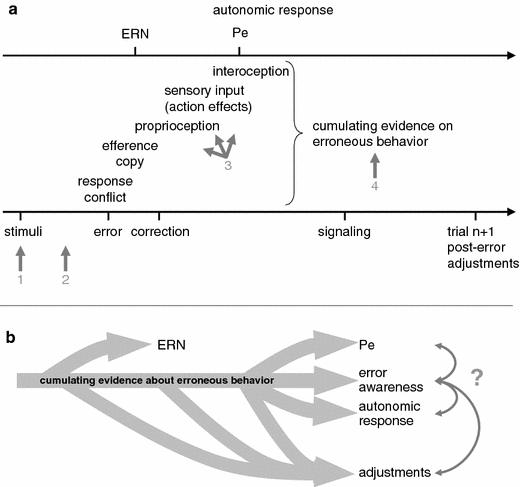Fig. 3.

Schematic of timing and interaction of processes during an erroneous trial that may support error awareness. a Timing of external and internal events as well as psychophysiological measures associated with the accumulation of evidence that the response was erroneous (not to scale). The latency of conscious error perception may vary substantially and should result from accumulation of sufficient evidence that an error has occurred, independent of the source of information which may range from early pMFC-mediated error monitoring via proprioceptive and sensory input discordant with expectancies from forward modeling to interoception. The numbered arrows indicate different influences that may lead to error blindness: 1 ambiguous stimuli make it objectively impossible to detect errors. Also fluctuations in attention or eye blinks precluding the perception of short stimuli may result in errors that cannot be detected reliably. 2 failure to represent task sets or to activate complex task rules may lead to errors. 3 insufficient efference copy, proprioceptive feedback or sensory input on action effects may hinder conscious perception of an error. 4 interactions with ongoing fluctuations in brain activity may lower signal-to-noise ratio in the representation of accumulating evidence of erroneous behavior. Moreover, action slips in the signaling or accuracy classification response may occur. b Influence of accumulating evidence of an error on different processes and correlates during error monitoring. It is unclear whether processes are working in serial or—at least partly—parallel fashion and how much they depend on each other. In particular the causal relationship of error awareness, some post-error adjustments and autonomic responses is still unclear
